Rachael Martin descends from Milan into the Po Valley to discover the home town of her mother-in-law.
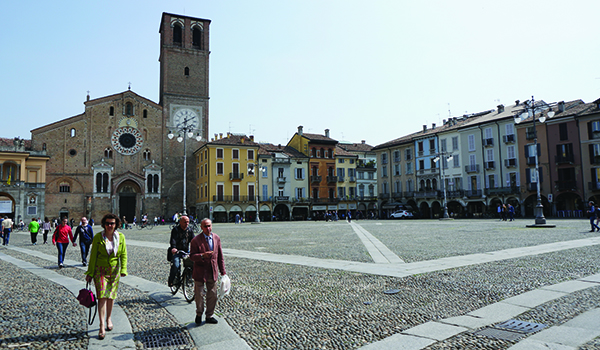
Lodi, one of those quiet Lombardy towns so easily reached from Milan by car or by train, is often quoted in the Milan newspapers as the perfect day trip for the Milanese. It’s south of Milan in the Po Valley, that flat, agricultural land famous for the production of cereals, rice and corn, the latter also used for polenta to accompany heart-warming game and beef stews. The Po Valley can be foggy in winter and blisteringly hot in summer, yet it has beautiful towns with perfect squares, jewels of the Renaissance period.
I remember eating in the Lodigiana, as the area around Lodi is known, in an unassuming restaurant during the famous food festival that takes place between October and December every year. It was one of those Sundays were you all pile into cars and drive for an hour or two for lunch, an Italian custom that I remember thinking strange when I first arrived in Italy until I realised how important food is to the Italian way of life. If it’s good food, it’s worth the drive. But I’d never actually been to Lodi, and when I saw that it was being promoted by the Lombardy tourist board as part of the Cult Cities project, it seemed like a good time to go.
This time I’m piling into the car with my husband and my kids, and we’re off not just looking for Lodi, but for a small village near it called Graffignana. It’s where my mother-in-law was born, over seventy years ago, and where she grew up within an agricultural world until she came to Milan when she got married. I can half imagine it, a small village in the Po Valley with not very much happening and possibly a few very good trattorias where you can eat the food of once upon a time.
Hints of summer
We arrive in Lodi on a warm spring Saturday that already hints of summer and the people are out for breakfast, shopping or simply a morning passeggiata, or walk. The star of the show, Lodi’s central square, the Piazza della Vittoria, really is as beautiful as they say and a rarity with its porticoes along all four sides. There’s the Romanesque-style cathedral complete with rose window, and the typical narrow, tall, coloured buildings around the square.
You need time to take it all in, and definitely a coffee or an aperitivo in one of the cafés that line the square. It’s a square that’s seen the passing of history: Medieval executions and the welcoming of bishops; and visits by Garibaldi, Mussolini and Pope John Paul II. The pace is provincial and calmer than in Milan. Lodi is a town to be savoured slowly.
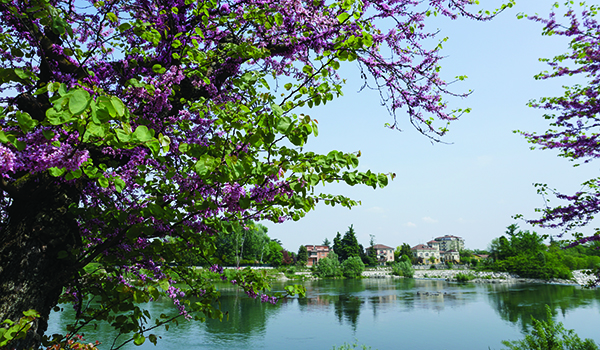
The cathedral isn’t the only church that Lodi has to offer. The Tempio Civico di Santa Maria Incoronata is one of the masterpieces of the Lombardy Renaissance with its breathtaking decorations and octagonal structure designed by Battaggio. There’s also the church of San Lorenzo, Lodi’s second oldest church and another beautiful example of the Romanesque style.
Yet one of the natural highlights of Lodi is the Cattedrale Vegetale (natural cathedral) just over the river. An amazing work of land art made up of 108 young oak trees, it’s Giuliano Mauri’s gift to his city and a living work in progress.
Roman municipium
Laus, as it was called, was originally founded by the Celts around 1000 BC, and then became a Roman municipium in 49 BC. During the Medieval period it was considered a threat to Milan because of its position and the resourcefulness of its inhabitants, and so, on 11th May 1111, the Milanese army destroyed the town now known as Lodi Vecchio (or Old Lodi). Federico Barbarossa, the Holy Roman Emperor, built the new town in 1158 where Lodi is today.
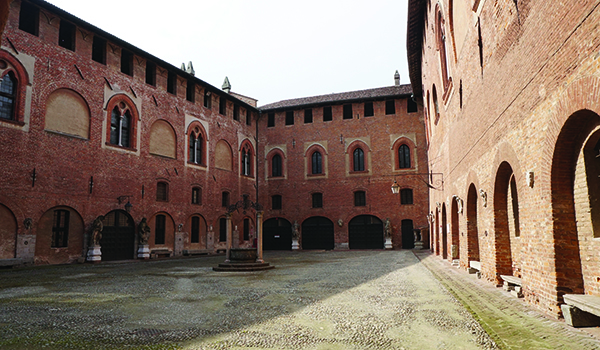
It then fell to the powerful Milanese Visconti dynasty in 1335 and between the end of the 16th and 19th centuries, it fell under the Spanish kings, as did the Duchy of Milan. The nearby Bolognini castle at Sant’Angelo Lodigiano became the summer residence of Beatrice Regina della Scala, wife of Barnabò Visconti. Beatrice was a Veronese noblewoman who married Barnabò Visconti and an astute politician who often accompanied her husband on his military campaigns.
The countryside
Outside Lodi, you come into the countryside and agricultural land. There are the familiar cascine lombarde, or typical Lombardy farmhouses – the more isolated ones almost resembling fortresses – that punctuate the flat landscape and are so characteristic of the area. They are typically built around a middle courtyard, the largest of which contained several courtyards and included a windmill, osteria, church and sometimes even a school.
We have a quick stop in Sant’Angelo Lodigiano to see the Bolognini castle and then it’s off to Graffignana to see where nonna (or grandma) was born. The village is pretty much as I expected: small, quiet, tucked in amidst the fields and farmhouses, with a pretty, timeless feel. My husband recognises it vaguely from the funeral of a cousin that he went to, and tells us about the family vines that belonged to his great grandfather. “Everyone worked the land,” my mother-in-law tells me. “That was all there was: corn, cereals, and a few vineyards.”
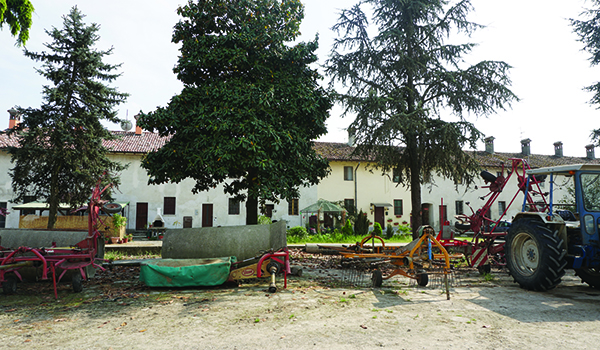
We then go to San Colombano al Lambro, an enclave of the Metropolitan City of Milan and its only place that produces wine. Federico Barbarossa undertook the building of the castle in 1158, and the Visconti family completed it.
It was given to the Belgioso family under the Spanish in 1529, with whom it remained until 1951. Diego Bassi is the President of the Consorzio of San Colombano DOC wines, which you can find at the enoteca inside the castle. “We use the Verdea grape,” he tells me, “People in Milan are used to eating it during the Christmas lunch, but not necessarily used to drinking the wine.” His policy is less quantity, more quality, and people appreciate it, he tells me.
Honest home cooking
We finish off our day at Osteria del Mercato, a family-run eatery right in the centre of Lodi, where Ettore and Alessandra provide honest home cooking at a reasonable price. “Everything is homemade, including the bread,” Ettore tells me.
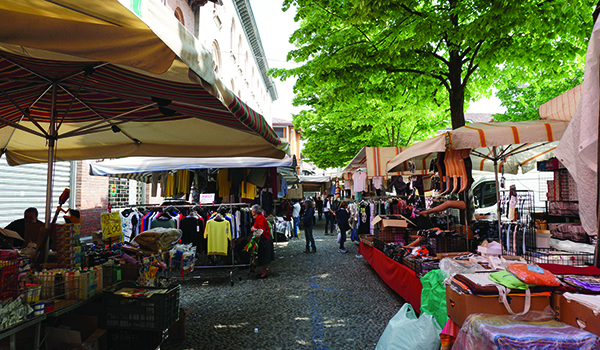
The house antipasto, antipast del usteria, is everything you could wish for and more. It includes local salamis and other cold meats (including donkey salami), cooked salami with vegetables, the familiar giardiniera – cooked vegetables preserved in vinegar, beans cooked with onion, sausage omelette, and nervetti salad, literally cartilages of the veal shin and knee. Nothing was wasted in the farmhouses and peasant houses of the Po Valley. It’s food I’m familiar with, and it’s a place I know we’ll return to again
